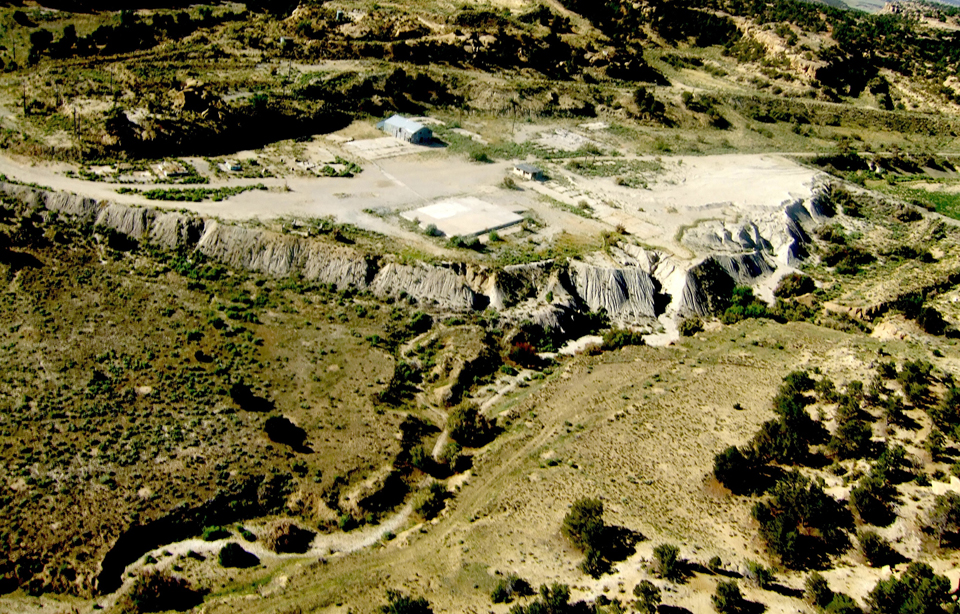The Church Rock Spill
Except for the bomb tests, the Church Rock was the biggest single release of radioactive poisons on American soil. It occurred thirty-four years to the day after the first atomic test explosion at Trinity, New Mexico. In terms of the amount of radiation released, the accident has been reported as the third largest radioactive accident in world history [after Fukishima and Chernobyl].
On July 16, 1979 [fourteen weeks after the accident at Three Mile Island], United Nuclear Corporation's Church Rock uranium mill tailings disposal pond breached its dam and 1,100 tons of radioactive mill waste in approximately 93 million gallons of mine effluent flowed into the Rio Puerco.
The contaminated water from the Church Rock spill traveled downstream reaching into Arizona. Shortly after, the radiation levels found in the river water 80 miles downstream were found to be 7000 times higher than background radiation levels. Local residents wading in the water who were not immediately aware of the threat went to the hospital complaining of burning feet and were diagnosed with heat stroke. Livestock were found dying.
The spill degraded the western Rio Puerco as a water source. A deep gully, which once flowed only in the spring, leads from the mine site into the Rio Puerco. It is now wet year round with water laced with radioactive isotopes, pumped from the mine shafts to keep them from flooding. The pond holds contaminated waste, residues of radioactive uranium, thorium, radium, and polonium, as well as traces of metals such as cadmium, aluminum, magnesium, manganese, molybdenum, nickel, selenium, sodium, vanadium, zinc, iron, lead and high concentrations of sulfates.
Though clean up after the accident was performed in accordance with state and federal criteria, only about 3,400 barrels of waste materials [approximately 1%] were retrieved, and almost none of the spilled liquid was pumped out of the water supply. Assistance of trucked in water ended in 1981 and farmers were then left with little choice other than to resume use of the river.
The mining complex was owned by the United Nuclear Corporation [UNC]. The earthen dam was knowingly built on geologically unsound ground. Soon after the spill, U.S. representative Morris Udall (D-Ariz.) told a congressional hearing that "at least three and possibly more Federal and state regulatory agencies had ample opportunity to conclude that such an accident was likely to occur." Even before the dam had been licensed "the company's own consultant predicted that the soil under this dam was susceptible to extreme settling which was likely to cause [its] cracking and subsequent failure."
In 1977 cracks had indeed appeared in the dam and went unreported to authorities. Aerial photographs revealed that “liquor” [acid milling liquids] which was supposed to be kept away from the dam face, was lapping against it. The dam had been opened with the understanding it would operate for eighteen months; twenty-five months later, at the time of the accident, state-required seepage devices and monitoring wells had not been built or inspected. Several hundred million gallons of liquor were being held in a large pond so the liquids could evaporate off and the solid tailings be stored. The earthen wall was twenty-five feet high and thirty feet wide. On the morning of the accident, the dam was carrying a load of tailings liquor at least two feet higher than allowed for in its designs, when a twenty-foot-wide section of the dam wall gave way, flowing into the Rio Puerco. Ironically, the UNC mine and mill were back in operation in less than five months following the accident. The same pond was in use. Some changes were made in the dam, but constant seepage - up to eighty thousand gallons of contaminated liquid per day - had become commonplace. In 1982, UNC announced temporary closure of the mill because of the depressed uranium market. It never reopened. Today it is owned by General Electric. Ultimately, for the company, the accident would mean a loss of some revenue and bad publicity. For Church Rock residents, however, it means a never-ending legacy of severe and fatal health ailments. Because of the long half-lives of the isotopes in the solid tailings, radiation will continue to be emitted from the tailings piles for billions of years. The site is yet to be reclaimed, and remains unmarked along NM State Route 566 leading to Red Pond Road.Video
Sound
Dr. Joe Shirley, former President of Navajo Nation, addresses the crowd at the Church Rock Uranium Legacy Remembrance and Action Day 2009 before renewing the moratorium banning uranium mining on Navajo Nation. (in English)
